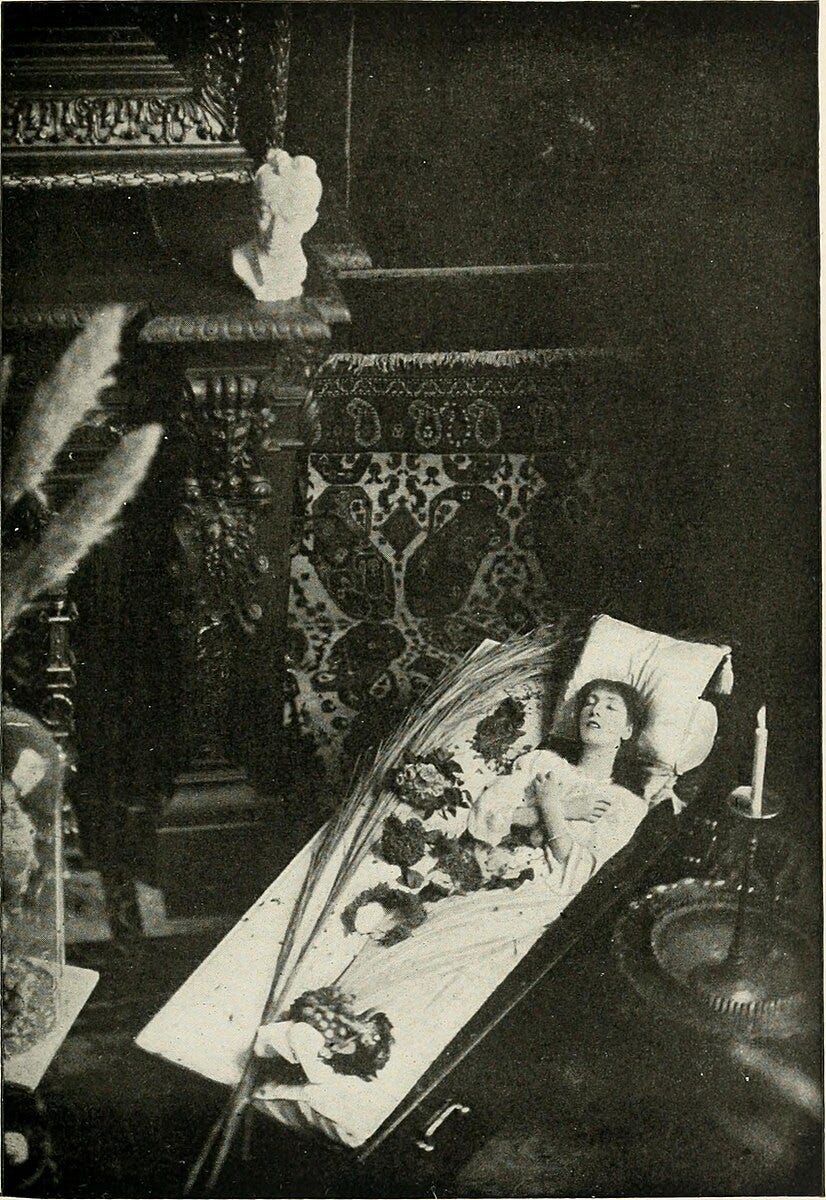Monster, Legend, Divine
The first Sacred Monster was a sex worker, Jewish, slept in a coffin, had one leg, and was so adored by the French that her funeral was attended by thousands of Parisians.

To many, the summer of 2023 was the summer of Barbie, the iconic doll turned billion-dollar-grossing film starring Margot Robbie and Ryan Gosling.
But to others, the summer of 2023 was the summer of Sarah.
Last year, the Petit Palais in Paris staged a blockbuster of a different sort: a comprehensive retrospective about Sarah Bernhardt. It coincided with the centennial anniversary of her death, and was an incredible show, with rooms on rooms teeming with art, costumes, and artifacts covering the trajectory of Sarah Bernhardt’s storied life.
Sarah Bernhardt – an icon so legendary, she was often mononymous – was the first modern celebrity to be the architect of her own public image; in her crafting of a public persona, she also discovered and popularized artists who have since become icons in their own right. Perhaps the most prominent example of this are the promotional posters she commissioned from Alphonse Mucha. Even if you have never connected the dots, you have without doubt seen them. Their style is instantly recognizable, emblematic of the Art Nouveau period. She was a muse to some of the most highly regarded names in the history of theater: Alexandre Dumas fils, Edmond Rostand, Victor Hugo, and Oscar Wilde all wrote some of their most famous works for her specifically.
She remains one of the most important and iconic figures in cultural history. Her impact and life story is immeasurable; far too large to fit into a single essay.
She was known by many names throughout her 78 years: Henriette-Rosine, her birth name; “The Divine Sarah”, her nickname; “The Golden Voice”, attributed to her on-stage talent.
But of course, there’s one that came later, coined for her by a young Jean Cocteau who, despite being initially snubbed by her (“I sniffled up my tears but my eyes were smarting and my face was streaked with mascara”), still followed and adored her:
“Le monstre sacré”, the Sacred Monster.
Sarah Bernhardt, by all means, should not have been as adored or as famous as she was. She was everything French society either disliked – or outright hated – in her lifetime: a Jew; a sex worker; a single mother; independently wealthy; eccentric; and, towards the end of her life, an amputee. Her funeral procession was attended by thousands of Parisians who thronged the streets to get a final glimpse of her – the first woman to receive the honor.
Keep reading with a 7-day free trial
Subscribe to SACRED MONSTER to keep reading this post and get 7 days of free access to the full post archives.



